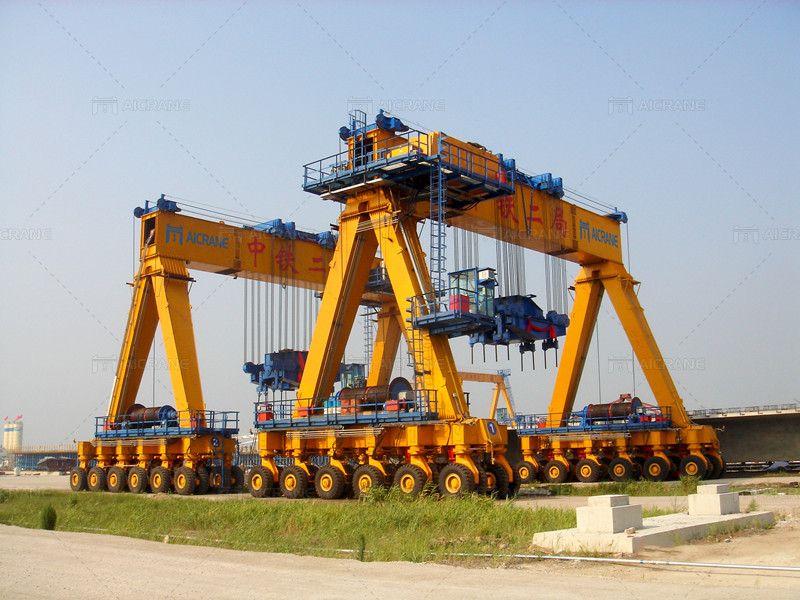Choosing a suitable straddle carrier excavator requires careful consideration of various factors to ensure optimal performance, efficiency, safety, and cost-effectiveness in material handling operations. A straddle carrier excavator combines the functionalities of a straddle carrier and an excavator, making it a versatile and valuable asset in port terminals, container yards, logistics centers, and construction sites. Here’s a comprehensive guide on how to choose a suitable straddle carrier excavator effectively:

Identify Operational Requirements
The first step in choosing a suitable straddle carrier excavator is to identify your operational requirements. Determine the specific tasks and applications for which you will use the equipment. Consider factors such as the type and weight of loads to be handled (containers, bulk materials, machinery), operational capacity (tonnage), stacking or lifting height, reach or outreach, maneuverability, terrain conditions (paved surfaces, rough terrain), and environmental factors (weather, temperature).
Understand Equipment Specifications
Familiarize yourself with the specifications and capabilities of different straddle carrier excavator models available in the market. Review technical data such as maximum lifting capacity, lifting height, reach, operating weight, engine power, fuel consumption, hydraulic system specifications, control features, and attachment options. Compare these specifications with your operational requirements to determine which model best meets your needs.
Evaluate Size and Dimensions
Consider the size and dimensions of the straddle carrier excavator in relation to your operational space and infrastructure. Ensure that the equipment can maneuver comfortably within your facility, including navigating aisles, ramps, and storage areas. Check the clearance height, width, length, turning radius, and ground clearance of the equipment to determine its suitability for your operational environment.
Assess Mobility and Maneuverability
Evaluate the mobility and maneuverability features of the straddle carrier excavator. Consider factors such as the type of tires (pneumatic, solid), suspension system, steering mechanism (conventional, crab steer), drive system (4-wheel drive, all-wheel drive), and ability to operate on different terrain types (concrete, gravel, uneven surfaces). Choose a model with robust mobility features that can handle your operational needs efficiently.

Review Safety Features
Prioritize safety features and technologies when choosing a straddle carrier excavator. Look for features such as load monitoring systems, anti-collision sensors, cameras or visibility aids, emergency stop buttons, warning alarms, and operator training programs. Ensure that the equipment complies with safety standards, regulations, and certifications applicable to material handling equipment.
Consider Attachment Options
Evaluate the attachment options and compatibility of the straddle carrier heavy duty gantry crane excavator with various lifting and handling attachments. Determine if the equipment can accommodate specialized attachments such as spreader bars, hooks, grabs, buckets, or forks for different types of loads and applications. Choose a model with a versatile attachment interface to enhance equipment versatility and operational flexibility.
Assess Maintenance Requirements
Consider the maintenance requirements and ease of servicing for the straddle carrier excavator. Review maintenance schedules, access points for routine inspections and servicing, availability of spare parts, technical support from the manufacturer or dealer, and warranty coverage. Choose a model with a reputation for reliability, durability, and ease of maintenance to minimize downtime and repair costs.
Evaluate Fuel Efficiency
Assess the fuel efficiency and operating costs of the straddle carrier gantry crane excavator. Compare fuel consumption rates among different models and consider factors such as engine technology (diesel, electric, hybrid), emission standards compliance, idle shutdown features, and eco-friendly initiatives. Choose a model that offers optimal fuel efficiency without compromising performance or productivity.
Consider Operator Comfort and Ergonomics
Take into account operator comfort, visibility, and ergonomics when choosing a straddle carrier excavator. Ensure that the equipment provides a comfortable and ergonomic operator cabin with adjustable seats, controls, instrument panels, HVAC system, noise insulation, and visibility enhancements (such as panoramic windows or camera systems). A comfortable and ergonomic cabin enhances operator productivity, safety, and job satisfaction.
Evaluate Cost and Return on Investment (ROI)
Finally, evaluate the initial investment cost, total cost of ownership, and potential return on investment (ROI) of the straddle carrier excavator. Compare pricing, financing options, leasing arrangements, resale value, maintenance costs, operational savings, productivity gains, and revenue-generating opportunities. Choose a model that offers the best value for your investment and aligns with your budget and long-term business goals.
In conclusion, choosing a suitable straddle carrier excavator requires a thorough assessment of operational requirements, equipment specifications, size and dimensions, mobility and maneuverability, safety features, attachment options, maintenance requirements, fuel efficiency, operator comfort, and cost considerations. By carefully evaluating these factors and consulting with industry experts or equipment suppliers, you can select a straddle carrier excavator that meets your material handling needs effectively, efficiently, and safely.